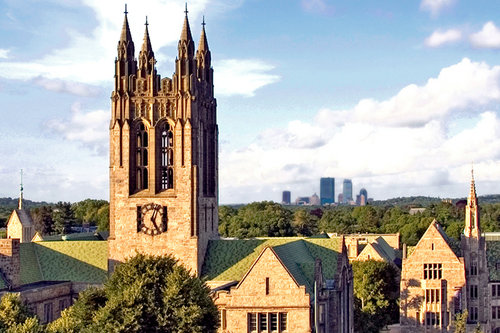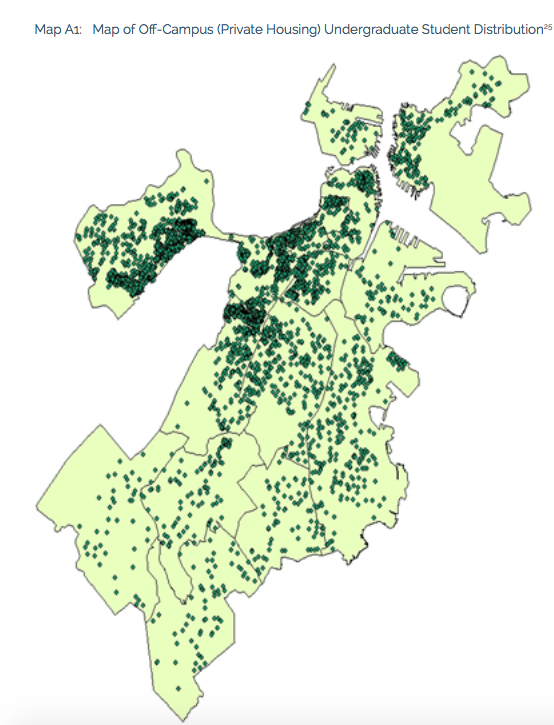Boston is a world-renowned college town, but its status as such is having a negative effect on the city’s housing stock and affordability.
The city’s affordability crisis arose in part because of an increase in residents and a decrease in available housing. The city is attempting to solve that problem in a creative way: by moving tens of thousands of students off of private, off-campus housing and into dorms.
There are just under 150,000 college students enrolled in Boston universities, and nearly 31,000 of them live in private housing, according to the city of Boston’s Student Housing Trends 2017 report. Not only are these students living off-campus, they are living in houses that have historically been occupied by working-class individuals and families. Over 13,000 students live in homes and units that have traditionally housed Boston families, according to the report.
“Every unit inhabited by students shrinks the pool of housing available for Boston’s workforce and increases the pressure on Boston’s supply of unsubsidized affordable middle-income housing,”
| Neighborhood | Undergraduates | Graduates | Total | % of total students off-campus |
|---|---|---|---|---|
| Fenway | 2,492 | 4,285 | 6,877 | 22.60% |
| Allston | 2,397 | 2,643 | 5,040 | 16.57% |
| Mission Hill | 2,294 | 2,083 | 4,377 | 14.39% |
| Brighton | 2,337 | 1,560 | 3,897 | 12.81% |
| Back Bay | 785 | 956 | 1,741 | 5.72% |
Effect on housing
Not only do many local college students prefer to live off-campus, they also prefer to live in areas that are in high-demand. Of the top 5 neighborhoods with the most college student, three of them are also in the top 5 in highest rent and housing price, according to Neighborhood X. College kids flocking to these areas further inflates housing costs, but it also brings in quality of life issues, especially when undergrads move in, according to the city.
“Growth in undergraduate enrollment is generally a greater concern than growth in graduate students for several reasons: 1) the greater number of undergraduates residing in the private-housing market, 2) their greater likelihood of residing in unsafe and unsuitable housing and 3) quality of life issues associated with the concentration of undergraduates in certain neighborhoods,” the report states.
Fenway/Kenmore has the highest number of undergraduate students, with 4,650 living there in 2016.
How to combat
To free up existing housing stock for priced-out individuals and families, Boston has an ambitious plan to build 18,500 new dorm beds by 2030. The city has already built 19 percent of that total, as it constructed 3,594 new beds since 2011. Nearly 6,000 new dorm beds are either under construction or are in the pipeline, according to the city.
Helping the city in its efforts is that enrollment at Boston’s colleges is staying flat. The city’s net growth in college students totaled 145 in 2016, and there’s been just a 1.7 percent increase in enrollment since 2013.
City officials are expecting enrollment to remain flat. If that is the case, creating over 18,000 new beds will reduce the undergraduate population in private housing by 50 percent and could free up as many as 5,000 housing units for adult residents, the city said.



Very interesting article. When you say that “Boston” is building 18,500 dorm beds, do you mean the city of Boston or the schools?
Hopefully the city is not building housing for schools that are already huge real estate benefactors because of their tax exempt status.